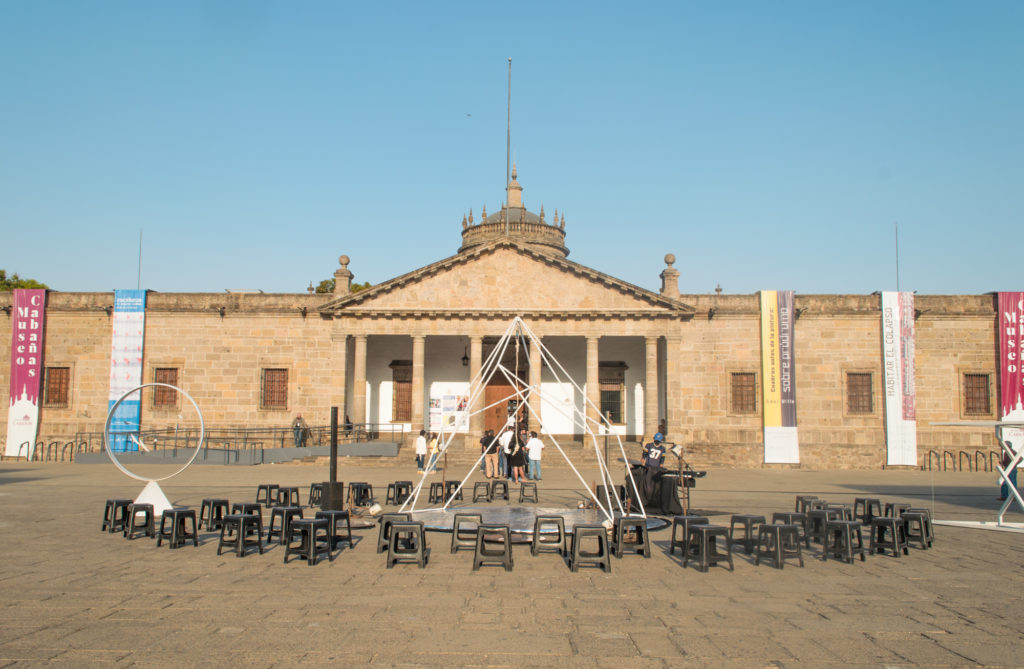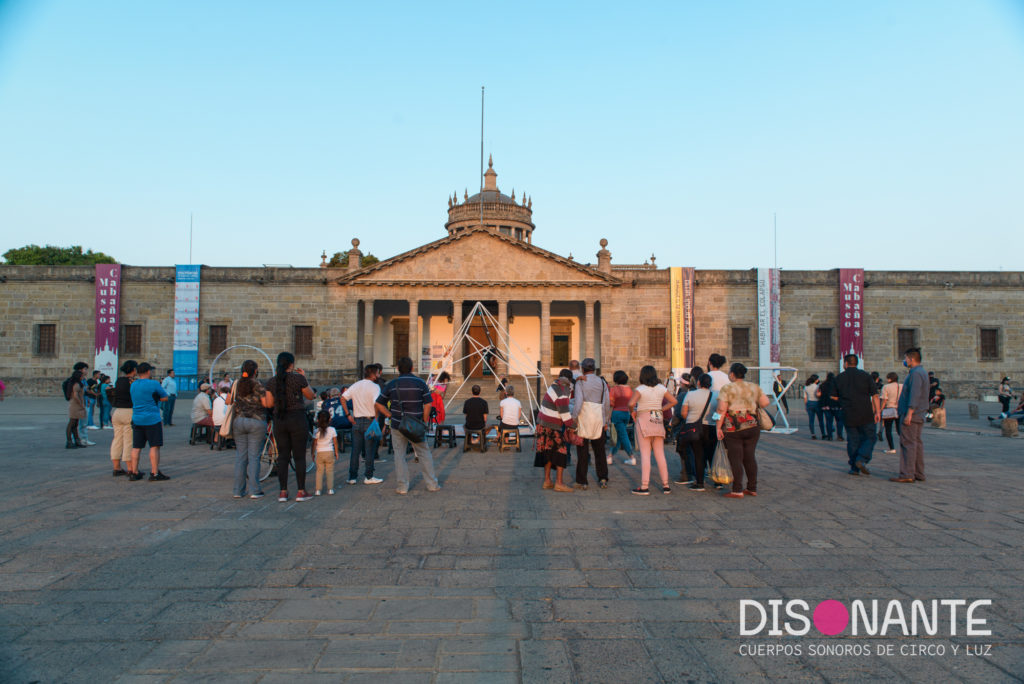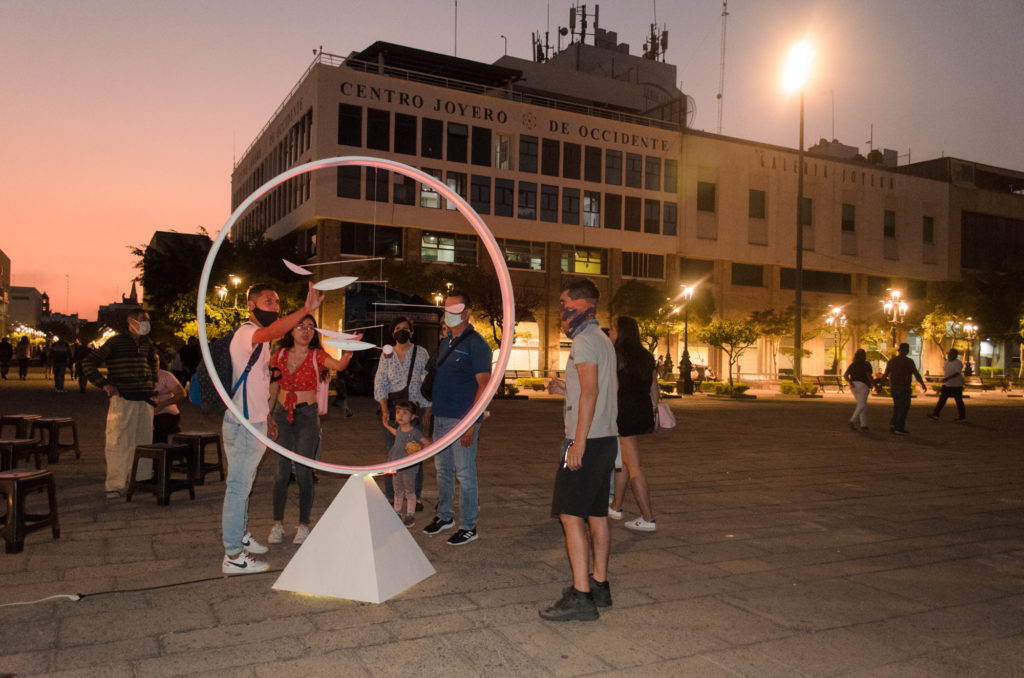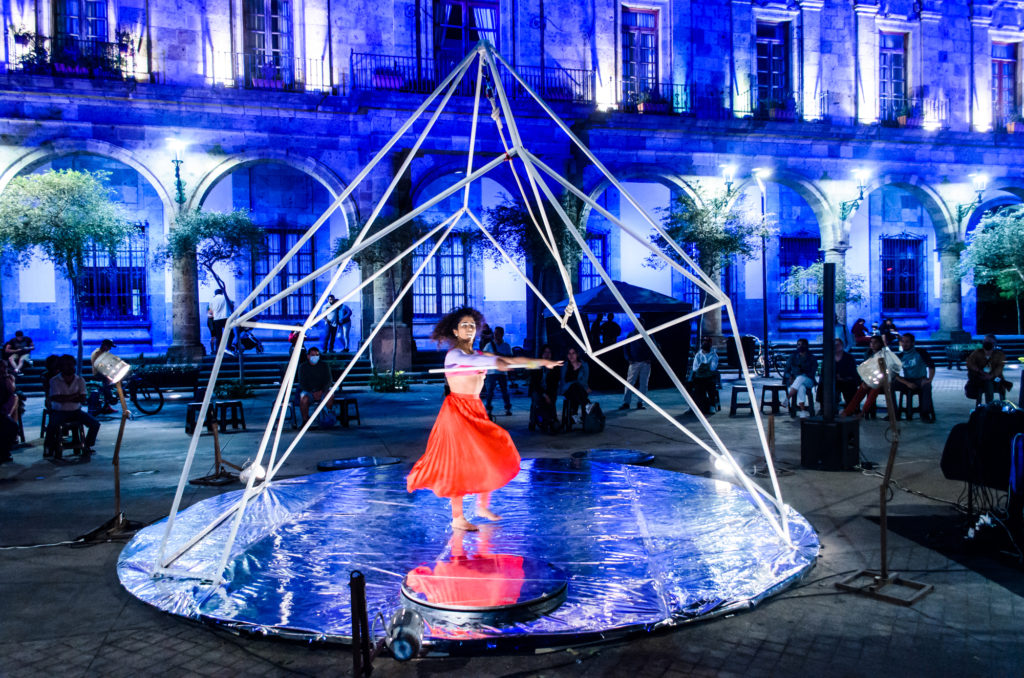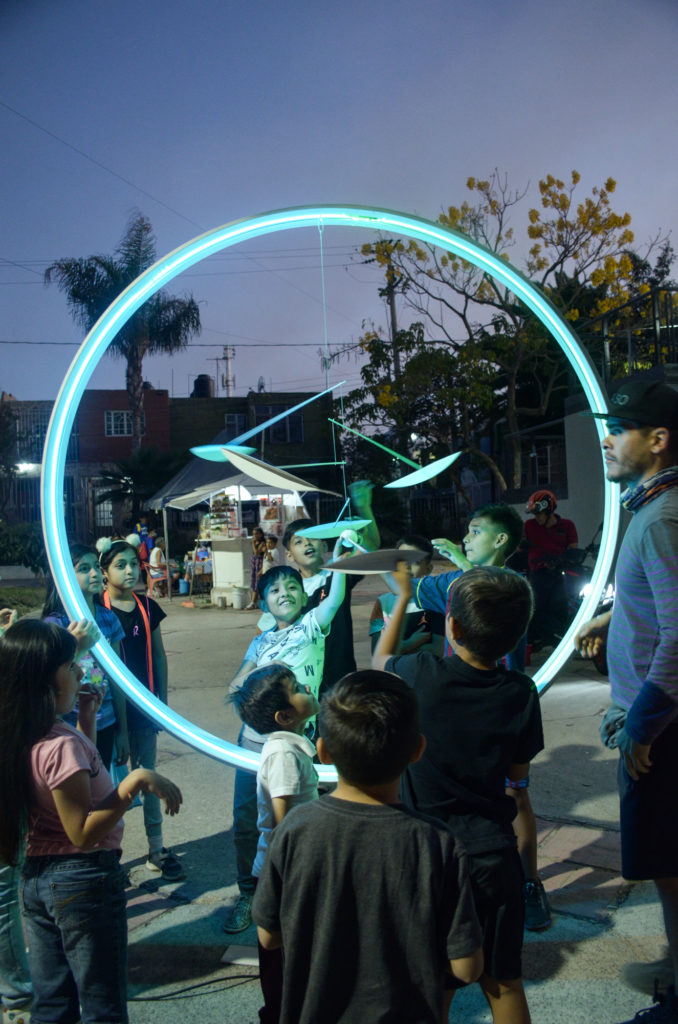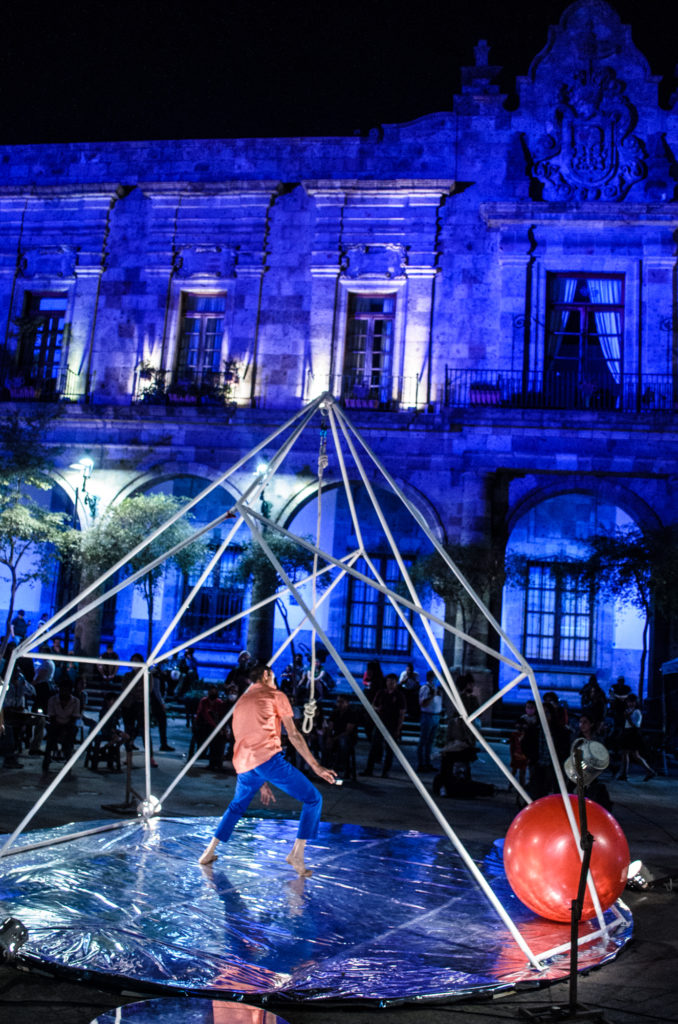Mapping the Circus Arts – A Conversation with Julia Sánchez Aja
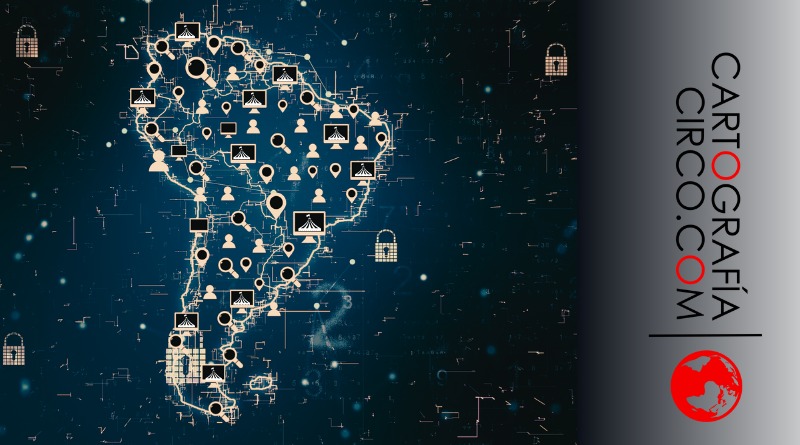
At the conception of CircusTalk in 2015, one of our biggest challenges was finding valid data for the size of the international circus and variety arts sector. This data simply didn’t exist. Europe provided the most tangible benchmarks through some of Circostrada’s and Creative Europe’s data projects. Still, the rest of the world lacked any kind of reliable, publicly available census of the circus and variety sector.
On the labor market, the size of the gig economy has been notoriously hard to measure accurately. Independent workers are defined differently by different organizations. Some only count workers whose gig work is their primary source of income; some also count workers who supplement their primary income with jobs in the gig economy and those who occasionally engage in paid gigs. CircusTalk’s last survey before the pandemic (2019) revealed that even on a professional platform and career marketplace like ours, only 38.7% of our artist members make a full-time living working in the circus and performing arts sector. The majority of artists supplement their income with jobs outside of the performing arts.
One of CircusTalk’s missions is to provide accurate and diversified data about the international circus sector through free registration via the platform. When members sign up, they complete their user profiles and identify the sector within entertainment they work in. These profile pages create ICDB, the International Circus Database for Circus. ICDB has been exponentially growing since we opened the platform. Currently, ICDB consists of 28K+ individual professionals (artists, designers, riggers, etc.), 1600+ companies, 700+ schools and training spaces, 150+ suppliers, and numerous other categories such as festivals, organizations, presenters, agencies, and museums.
Accurate data is crucial for the funding and growth of every industry . Circus still struggles to be recognized as an art form when it comes to funding. This is true internationally, although some regions, specifically Europe and Canada, are way ahead of the rest of the world. Accurate data helps us justify the art form’s existence and leverage its greatness and importance within the performing arts.
In a data-driven world, it always makes me happy to see censuses, and survey projects that fill in a few more puzzle pieces of the big missing picture of entertainment and gig economy data. One of these significant projects is the Circus Cartographie Project happening in Ibero-America.
I had a chance to sit down with Julia Sánchez Aja, one of the co-founders of the Circus Cartographie Project, and asked her about circus mapping. Julia is a stage director, artist, and manager who also founded the Center for the Dissemination of Circus Arts in Mexico A.C., an organization dedicated to promoting and disseminating the circus scene in Latin America.
Andrea Honis (AH): Tell us about the Cartographie project?
Julia Sánchez Aja (JSA): Circus Cartographie is an international cultural cooperation project dedicated to the dissemination and promotion of circus for artists, companies, fairs and festivals, social circuses, exhibition and creation spaces, associations, suppliers, and international collaborations that have circus as the main axis of action and a clear desire to connect internationally.
The objective of the Circus Cartographie Project is to map projects and creators from different sectors of Ibero-American circus, and to give visibility to and promote relationships between similar projects.

AH: What was the basic need that precipitated this project?
JSA: As each country has its own realities and moments, circuses in Latin America nowadays have very diverse situations and cultural, social, and economic contexts. During the pandemic, Leandro Mendoza, artistic director of Ciclicus and current director of Trapezi, and I realized that it was hard to find circus colleagues to talk with about specific themes in circus, so we started to conduct extensive research; the results were unbelievable. There were more circuses than we could have imagined, but there was not a database that showed this reality.
AH: How did the idea for the project surface, and what organizations and grants helped support the project in development?
JSA: In 2020, Leandro and I were invited by the International Contemporary Circus Market (MICC, Tohu, Montréal) to lead the FOCUS LATIN AMERICA panel series and to propose something to connect people from Latin America with one another. We thought that, given the problematics in our countries, it would be important to propose a free tool that would be useful for creating networks and, very importantly, would last in time. So we came up with the idea of this mapping project that rapidly expanded to include Spain and Portugal.
This project arose at the initiative of Leandro Mendoza (Ciclicus) and myself (CEDACIRC A.C), and was promoted by the MICC to respond to the need for the dissemination of circus internationally within the Latin American territory. Seeing the positive response from the sector, the need to expand the cartography territory became evident, so it was decided that the project should cover the entire Ibero-American territory.
In 2021, the Circus Cartographie project won a grant from the Ministry of Culture and Sports in Spain to build the website, which MICC supported by providing it with an English translation. We are constantly looking for support in order to keep it going and free.
AH: Tell us about the process and the people involved in the project?
JSA: The project was conceived by Leandro Mendozaand myself in collaboration with Ruth Wikler from MICC in Canada. In the first stage, we started the project with just us three, and nowadays the main team is formed by fourpeople.
The process was very rich and took about a year and a half to bring the project online. As there was no departure point and we were so new at this, we created our “own” process to create the database. First, during the MICC 2020, we held eight meetings with circus organizations and experts from specific regions of Latin America in order to get to know each other’s projects and understand the problematics and context behind each of them. At this stage, we had key people who helped us build the first database.
The second stage was to establish the requirements for someone to be listed in the database and create a Google form that we sent to organizations in that first database, asking them to share it with other circuses that they thought might be important to have on the platform.
At last we processed all the data, and finally we got a subvention to create the website and expand it to include Spain and Portugal.
AH: Where is the project today?
JSA: Today, the Circus Cartographie website hosts more than 142 projects from Latin America, Spain, and Portugal. It is available in seven languages, and we continue inviting projects to be part of this platform. It is no longer necessary to send in a form; projects can register themselves on the website, upload their images and manage their information as needed. There is still a validation process, but it is faster and simpler than it was before.

AH: What is your future hope and goal with this project? How do you think this project will help the circus community in South America?
JSA: In the future, we would like to accommodate projects from all the regions of Ibero-America. We also aim to have meetings, resources, and forums to discuss specific themes in each sector and to build strong connections between the participants. We want to stimulate the circulation of academic and artistic knowledge so that in the future, we can create joint actions to stimulate the development of works produced in Ibero-America.
We believe that Circus Cartographie will be an important tool to stimulate touring and international artistic and academic exchanges and help the sector to stimulate processes for creation and production.
 AH: Julia, besides your advocacy work for circus in Latin America, you are an acclaimed and active artist in Mexico. Your artistic work focuses on the relationship between concepts in physics and the circus. I cannot complete this interview without asking you about your recent work and artistic projects. What excites you as an artist these days?
AH: Julia, besides your advocacy work for circus in Latin America, you are an acclaimed and active artist in Mexico. Your artistic work focuses on the relationship between concepts in physics and the circus. I cannot complete this interview without asking you about your recent work and artistic projects. What excites you as an artist these days?
JSA:I used to perform cloud swing for more than 10 years, and yes, you are right; during that time, I focused my artistic research towards the physics of circus and the connections between art, science, and our spiritual roots. I am passionate about creating shows that are built with these three concepts, and about how circus bodies can create an interesting and unique language and that at the same time has an impact on the audience.
AH: Your creation, AURA, explored the concept and implications of the golden ratio. What was the inspiration for that show, besides your general interest in physics?
JSA:AURA explores the body, beauty, the rational and the irrational, order and chaos through the universal principles of physics and the golden ratio. It shows the path of the humanity from creation to the last ray of light. “Cuervo,” the great music composition by Jorge Andres Gonzalez; the lighting design by Fernando Cano; and even the duration of the scenes of the show are built in mathematical sequences that result in perfect harmony.
The inspiration of the show is the golden ratio,a special relationship between two numbers that often occurs in nature. [Two numbers a and b are in the golden ratio with each other if the ratio of their sum (a + b) divided by the larger number (a) equals the ratio of the larger number divided by the smaller one(a/b).]This is a concept that I have been passionate about since I was young. I was always convinced that combining the golden ratio and the physics of circus would have an interesting result. I was very lucky to find the perfect team that trusted this idea and could create with that approach.
The show has been incredibly well-received by audiences. Even if the circumstances have made it difficult for us to tour, the show has been presented in the most important theaters in Mexico, all of them with sold-out seats. We earned an Audience Award at the ICA and we hope we will start touring soon.
AH: How about your brand new show Disonante? What is unique about this show?
JSA: Disonante (Dissonat) premiered on March 22, 2022. The show is created for public spaces and continues my work toward physics and science in circus. But this time, with technology, we created sound devices that read the movement of the artists so they are creating the show’s music with their performance.
The show is built from three individual pieces that explore balance, movement, object manipulation, and the human body in suspension, and are enriched by four sculptures that are lit up by neopixels in sequence with the music. The three pieces can be joined together in four different ways, and we have two show formats, one for public spaces and one for theaters.
Disonante invites the audience to be part of the show and to explore their own movement. It is like a living gallery!
AH: Thanks, Julia!
CircusTalk is a proud supporter of the Cartographie project. You can access the 140+ and growing Latin American projects via theICDB page or directly at Cartografiacirco.com.
.
.
.
Editor's Note: At StageLync, an international platform for the performing arts, we celebrate the diversity of our writers' backgrounds. We recognize and support their choice to use either American or British English in their articles, respecting their individual preferences and origins. This policy allows us to embrace a wide range of linguistic expressions, enriching our content and reflecting the global nature of our community.
🎧 Join us on the StageLync Podcast for inspiring stories from the world of performing arts! Tune in to hear from the creative minds who bring magic to life, both onstage and behind the scenes. 🎙️ 👉 Listen now!
